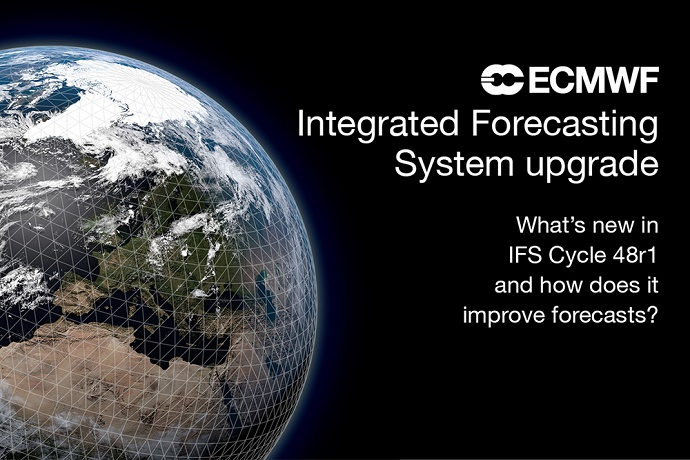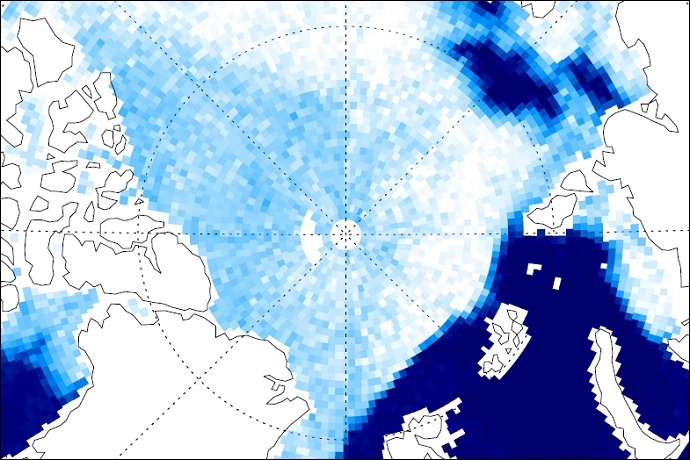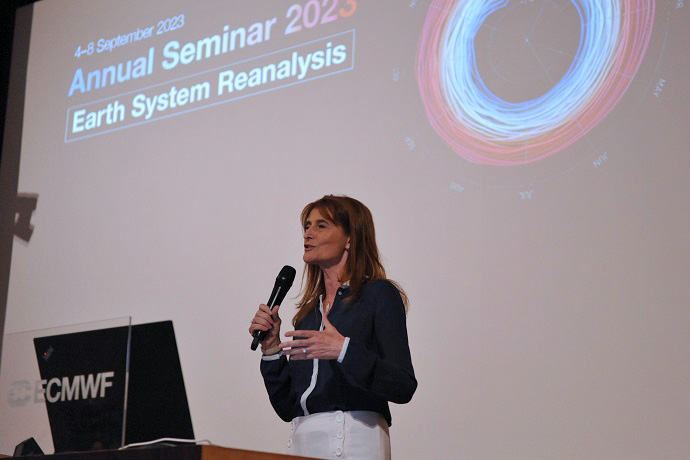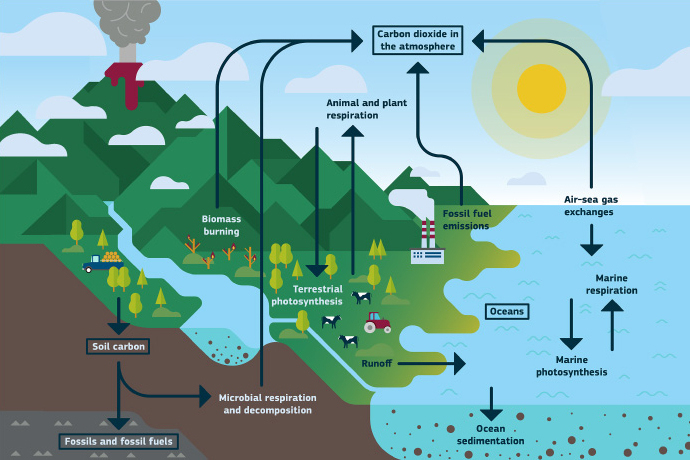

ECMWF news highlights in 2023 include a major upgrade of the forecasting system; initiatives to drive forward weather science, including developments in machine learning; and news from the EU-funded services implemented by ECMWF.
Forecast developments
On 27 June, we implemented a substantial upgrade of our Integrated Forecasting System (IFS) to Cycle 48r1. It improved the skill of the Centre’s weather predictions and increased the resolution of medium-range ensemble forecasts.

The upgrade recast extended-range forecasts, too, which now have 101 instead of 51 ensemble members and are run more frequently than before.

Tropical storm strike probability maps for week 4 for the extended-range forecast starting on 7 January 2021, showing (a) the strike probability produced with a 51-member ensemble and (b) the strike probability produced with a 101-member ensemble, both in the real-time forecast configuration.
Cycle 48r1 also includes extensive changes to the way the initial conditions of weather forecasts are established.

Using higher-resolution data assimilation, the core pressure of a tropical cyclone was analysed at 951 hPa, which is just 5 hPa higher than the observed value of 946 hPa. Using the lower resolution, a core pressure of 967 hPa was indicated, 21 hPa above the observed value.
Earlier in June, we reported on forecasts predicting a growing El Niño event in 2023. The predictions, which included our seasonal forecast, were assembled by the EU’s Copernicus Climate Change Service (C3S) implemented by ECMWF.

Collaboration
The European Weather Cloud, a distributed cloud computing infrastructure of ECMWF and EUMETSAT providing access to data and other services from the two organisations, became operational on 26 September 2023.

ECMWF supports the UN’s Systematic Observations Financing Facility (SOFF) to widen the provision of weather observations in some countries, notably by agreeing to supply its forecasts to SOFF participants.

More than 140 people attended ECMWF’s 20th Workshop on High-Performance Computing (HPC) in Meteorology in Bologna, Italy, from 9 to 13 October 2023, and nearly 170 registered online. The theme was ‘Diversifying HPC’.

Driving forward weather science
Data assimilation is the combination of the latest observations with a short-range forecast to obtain the best possible estimate of the current state of the Earth system. Machine learning can contribute to it by optimising the use of satellite observations.

To help assess machine learning weather forecasts from different sources, including ECMWF’s own version, we now show a range of them in ECMWF’s charts catalogue.

A blog was created to maintain regular coverage of fast developments in machine learning, including a presentation of ECMWF’s own alpha version of a machine learning weather forecasting model, the AIFS.

The urban environment will for the first time be considered in the IFS from next year. This is important because in cities temperatures are often elevated compared to their surroundings.

About 100 scientists and students came together from 4 to 8 September 2023 for the Annual Seminar at ECMWF in Reading, UK, to learn about the history and state of the art of Earth system reanalysis activities.

EU-funded services
The EU-funded Copernicus Climate Change Service (C3S) implemented by ECMWF found that the global-mean surface air temperature was more than 1.5°C above pre-industrial levels in early June, which was a first for a summer month.

It also showed that the year 2022 was the second warmest on record in Europe, and the summer of 2022 was the hottest in Europe.

The EU-funded Copernicus Atmosphere Monitoring Service (CAMS), implemented by ECMWF, is working to support the new Global Greenhouse Gas Watch (G3W) of the World Meteorological Organization (WMO).

An ECMWF-coordinated project to monitor anthropogenic CO2 emissions worldwide has now completed its final year. This EU-funded initiative will feed into a permanent anthropogenic greenhouse gas emissions Monitoring and Verification Support Capacity (CO2MVS), which is being developed as part of the EU’s Copernicus Atmosphere Monitoring Service (CAMS) implemented by ECMWF.

Finally, the second phase of the EU’s Destination Earth (DestinE) initiative was confirmed on 13 December 2023.

Other news articles
Additional reports can be found on the news page of the ECMWF website. For more developments on the Copernicus services run by ECMWF, consult the news pages of C3S and CAMS, and more DestinE articles can be found in the news section of the DestinE website.
